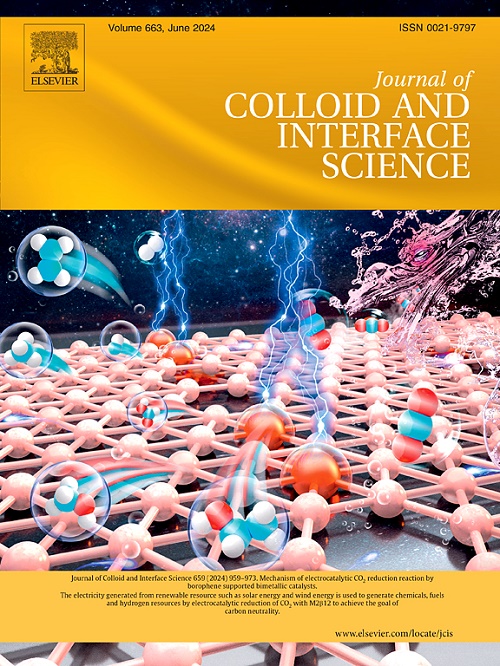为金属钠阳极的长期稳定性设计多功能人工SEI层。
IF 9.7
1区 化学
Q1 CHEMISTRY, PHYSICAL
引用次数: 0
摘要
钠金属电池成本低廉,在大规模储能方面具有巨大潜力,但由于钠金属枝晶的不可控生长和钠金属阳极循环过程中的广泛副反应,钠金属电池面临着电池寿命缩短和安全问题等挑战。在这项工作中,我们通过在金属钠表面引入 SnF2 来应对这些挑战,从而在原位生成稳定的复合界面层(NaSn@NaF)。该界面层包含具有电位梯度的 Na-Sn 合金和电绝缘的 NaF,可促进 Na+ 离子的均匀沉积,并有效抑制枝晶的形成和副反应。此外,改性后的人工固体电解质界面层(SEI)的平均杨氏模量约为 6.9 Gpa,是裸钠(2.4GPa)的 2.7 倍。这种人工/天然复合界面层大大提高了钠电极的性能。对称电池循环测试表明,带有复合界面层的电极可持续充放电 870 小时,与原始钠金属阳极的 95 小时相比有了显著提高。此外,全电池配置(Na|NaSn@NaF||NVP)表现出显著的长周期稳定性,在 2C 速率下循环 1100 次后仍能保持约 80% 的容量,且容量衰减极小。这项研究提出了一种简单、高效的方法,提高了钠金属阳极的实际应用潜力。本文章由计算机程序翻译,如有差异,请以英文原文为准。

Designing multifunctional artificial SEI layers for long-term stability of sodium metal anodes
Sodium metal batteries, which are low-cost and have great potential for large-scale energy storage, face challenges such as shortened battery life and safety issues due to the uncontrolled growth of sodium dendrites and extensive side reactions during the cycling of sodium metal anodes. In this work, we address these challenges by introducing SnF2 to the surface of the sodium metal, which in situ generates a stable composite interfacial layer (NaSn@NaF). This interfacial layer contains Na-Sn alloy with a potential gradient and electrically insulating NaF, which promotes uniform deposition of Na+ ions and effectively suppresses dendrite formation and side reactions. Additionally, In addition, the average Young’s modulus of the modified artificial solid electrolyte interface layer (SEI) is about 6.9 Gpa, which is about 2.7 times higher than that of bare sodium (2.4GPa). This artificial/natural composite interfacial layer significantly enhances the performance of sodium electrodes. Symmetric battery cycling tests demonstrated that the electrode with the composite interfacial layer could sustain continuous charging and discharging for 870 h, a significant improvement compared to the 95 h achieved by the pristine sodium metal anode. Furthermore, the full-cell configuration (Na|NaSn@NaF||NVP) exhibited remarkable long-cycle stability, maintaining around 80 % capacity retention after 1100 cycles at a 2C rate, with minimal capacity degradation. This research presents a straightforward and efficient method that enhances the practical application potential of sodium metal anodes.
求助全文
通过发布文献求助,成功后即可免费获取论文全文。
去求助
来源期刊
CiteScore
16.10
自引率
7.10%
发文量
2568
审稿时长
2 months
期刊介绍:
The Journal of Colloid and Interface Science publishes original research findings on the fundamental principles of colloid and interface science, as well as innovative applications in various fields. The criteria for publication include impact, quality, novelty, and originality.
Emphasis:
The journal emphasizes fundamental scientific innovation within the following categories:
A.Colloidal Materials and Nanomaterials
B.Soft Colloidal and Self-Assembly Systems
C.Adsorption, Catalysis, and Electrochemistry
D.Interfacial Processes, Capillarity, and Wetting
E.Biomaterials and Nanomedicine
F.Energy Conversion and Storage, and Environmental Technologies

 求助内容:
求助内容: 应助结果提醒方式:
应助结果提醒方式:


